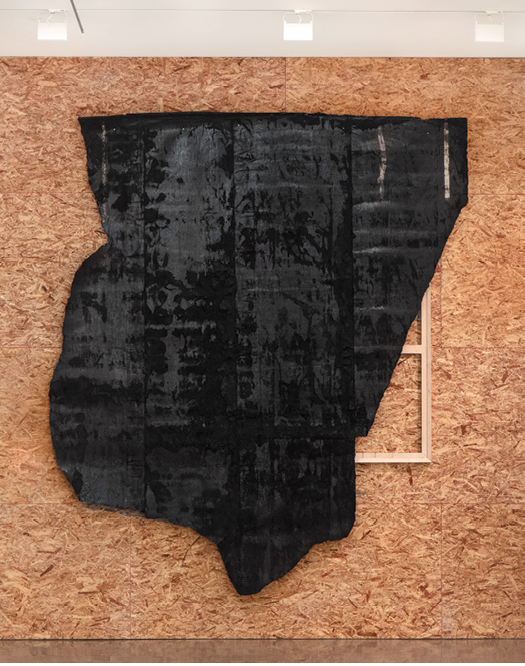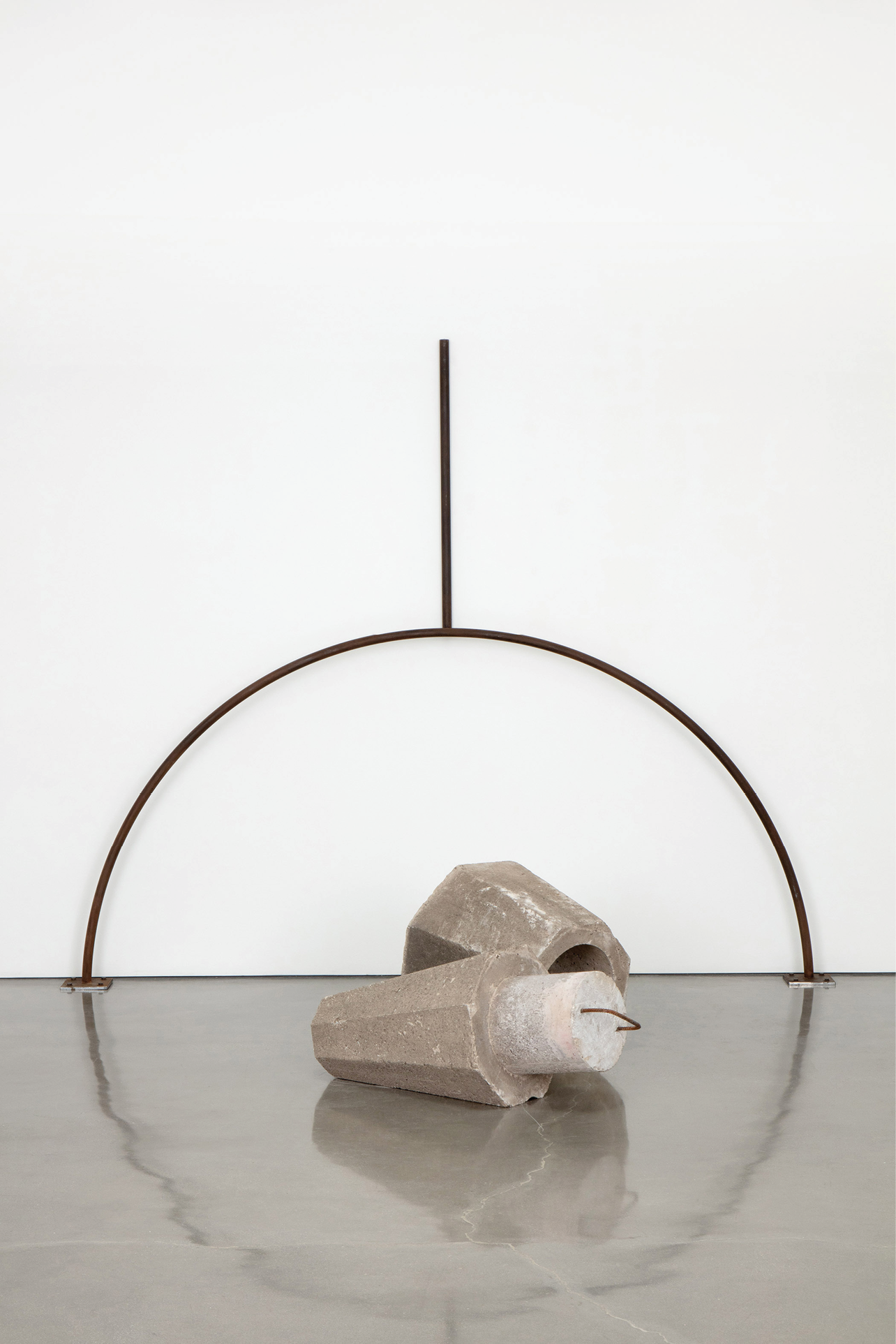“Blessed are the meek…” – Gospel of Matthew, 5:5
Has Theaster Gates truly “upcycled” his entire wardrobe as a spiritual gesture and a means of achieving transcendence? Perhaps he has. But in the most literal sense, Gates has taken the raw material of his sartorial well and turned it into a commodity: a series of elevated objects (ascots, mostly, and a quilt draped across a massive gantry) to be sold inside the white cube.
The verse from the Gospel of Matthew that inspired Gates to divest himself of habiliment deserves another look. Matthew 5:40 (“If someone wants to sue you and take your tunic, let him have your cloak as well.”) appears within a larger passage that has long been co-opted and purged of its radicalism—a once subversive and liberating call to turn the prevailing social and political order on its head.
But Gates’ use of the “Shirt and Cloak” text is subversive and coded. It becomes instructive then to look at the objects, some of which follow the template of “upcycling;” for example, his use of tar—a familiar Gates theme. Three White Lines (2019), a tar-on-canvas tapestry, equates black labor (which, Gates has noted in previous conversations, reflects back to when African American craftsmen were highly skilled builders) with European high culture—fine tapestries, history scene painting, or the achievements of high modernism (cf. Clyfford Still, Barnett Newman, Mark Rothko). And though we know it was fabricated, it conjures images of a fragment that might literally have been torn from a Chicago rooftop in the historically African American Grand Crossing neighborhood where Gates launched Dorchester Projects, Rebuild Foundation and Stoney Island Arts Bank. (Roofing was his father’s profession, and as the story goes, he inherited his father’s tar kettle on the older Gates’ retirement.) Other works, which use rubber bitumen, similarly refer to roofing technologies and the independence the black working class enjoyed a generation or two ago (Long Run, Left with Guide Line; Long Run, Right with Guide Line; both 2018).

Theaster Gates, Three White Lines, 2019, courtesy Regen Projects, Los Angeles, photo by Joshua White
But the seemingly disparate collection responds to the call to resist power structures and dodgy hermeneutics and firmly anchors this body of work within Gates’ larger concerns around the African American experience.
In the smaller gallery, Flag (2017), made from a decommissioned fire hose (another reprised theme), alludes to the Civil Rights struggles of the 1960s. Along with Diagonal Line for Roofing (2019), it is serenaded by Gates’ performance of the vocal score based on the Gospel verse, which sets the emotional tenor of the exhibit. A mournful free-form poetry spills from speakers embedded in Woah Dee Woah (2019), and one can’t help but consider the violence enacted by white supremacy: “When they come, they will come… give them your shirt, your cloak, go that mile… if the man ask me to go one mile down the road… my horse is tired, he don’ want to go… ”
Man Ray on My Mind (2019), like John Edmonds’ Tête de Femme (2018, exhibited in this year’s Whitney Biennial), references the Surrealist’s now notorious photograph Noire et Blanche (1926)—notorious for being implicated in directly promoting an ideology of European superiority. Both Edmonds and Gates turn that ideology on its head.
Gates follows this rebuke with a meditation on black cultural and literary achievement in Lerone’s Headrest on These Streets (2019)—likely in memoriam for Lerone Bennett Jr., a scholar and the editor of JET and later of Ebony. Gates’ Raising Goliath, (exhibited at White Cube, London in 2012), which balanced on pulleys an archive of JET and Ebony magazines with a 1967 Ford fire engine, similarly celebrates this legacy.
Yet it is imperative to view “Shirt and Cloak” against the backdrop of Gates’ engagement in the revitalization of Grand Crossing, wherein the cultivation of a public square and an extended community is wholly contingent on art—as a countervailing force against the leverage of private capital and an instrument to reclaim the neighborhood for those who live there. Two works (Half Circle with Pier, and Circle Form with Pier, both 2019) use building materials recovered from one of Gates’ projects in Grand Crossing, evoking his many forays into creating spaces for culture that generates social capital.
The economic realities of the commercial gallery place this exhibit uncomfortably between contradictory purposes. And while culture does not exist without investment, another way to understand this work is as a coded text that seeks to subvert the commercial gallery in which it sits. Gates’ insistence that his work be seen beyond the performative platform and the finished object, and instead reference process as aesthetic structure, is perhaps one of the most important reasons for his relentless push into the realm of possibility and his social and critical relevance.


